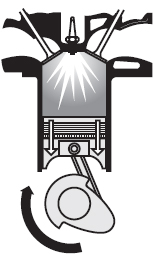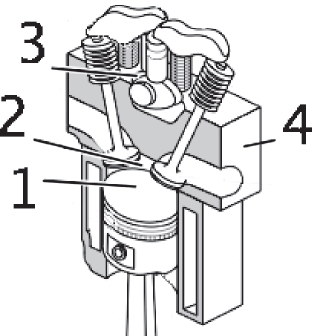Automotive Information Practice Set 1
-
Select the best answer for each question. This question set has 11 practice questions, which is the number of Automotive Information questions you will see if you take the CAT-ASVAB.
-
How many revolutions of the crankshaft does it take to complete one cycle of events in a four-stroke cycle engine? - one-half
- one
- two
- four
-
This image depicts what stroke in the four-stroke cycle? 
- intake stroke
- compression stroke
- power stroke
- exhaust stroke
-
The engine’s crankshaft is connected to the piston through the - cylinder
- intake valve
- exhaust valve
- connecting rod
-
A 12:1 air-fuel mixture would be a mixture. - rich
- lean
- stoichiometric
- none of the above
-
Diesel engines utilize a - high compression ratio
- spark ignition system
- low compression ratio
- carburetor
-
The antifreeze in the engine’s coolant will - lower the boiling point of the coolant
- raise the boiling point of the coolant
- raise the freezing point of the coolant
- lower the corrosion resistance of the coolant
-
Identify this engine component. 
- spark plug
- fuel injector
- wrist pin
- valve spring
-
Electronic fuel injectors are controlled by the - powertrain control module
- fuel pressure regulator
- electric fuel pump
- ignition switch
-
Where does combustion take place in the engine? 
- 1
- 2
- 3
- 4
-
The PCM receives signals from the vehicle’s - sensors
- diagnostic data link
- actuators
- scan tool
-
Oil galleries in the crank shaft provide pressurized oil to - the pistons
- the push rods
- the valves
- the connecting rod bearings